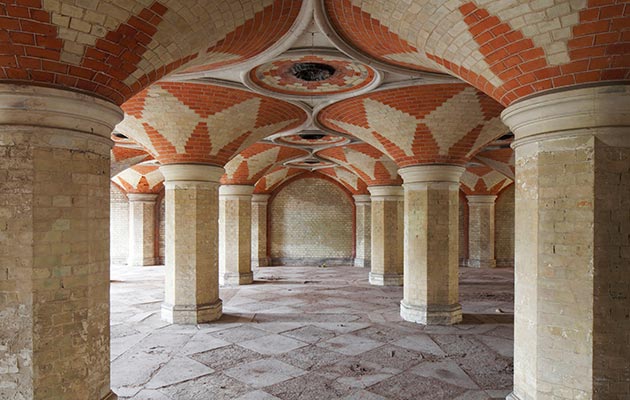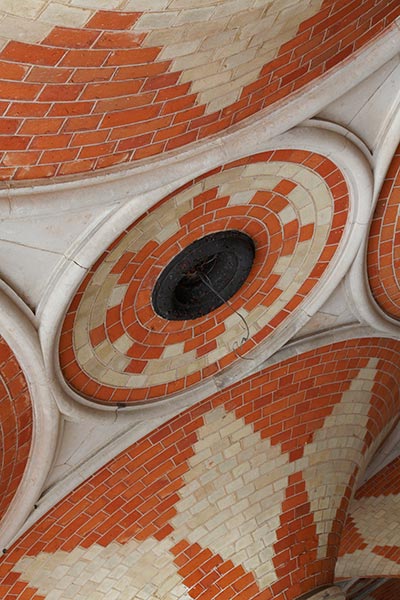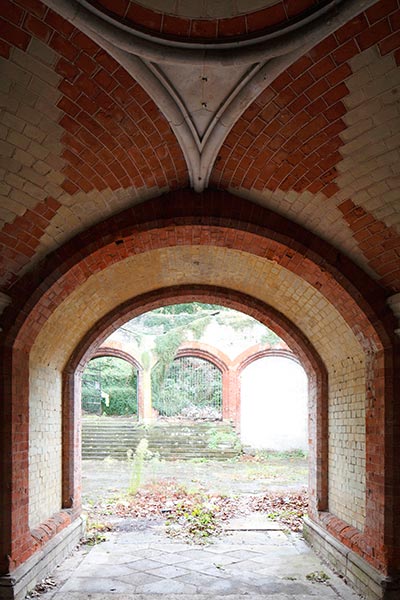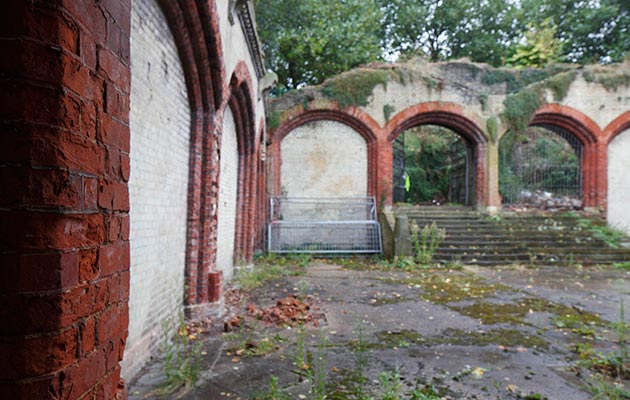|
|
||
|
An ornate and long-abandoned pedestrian subway to South London’s Crystal Palace is being opened to visitors for one weekend, as plans for its restoration get underway Alongside a busy stretch of the A212 in South London, a simple stone gate has been unblocked, decades after it was bricked up and forgotten. Workmen have also finished rebuilding its flight of steps down to a Victoriana-hunter’s dream hidden under the road. This beautiful Byzantine-esque subway once led first-class train passengers from the purpose-built High Level station to that wonder of the Victorian world, the Crystal Palace. Inaccessible for far too long, there’s a rare chance to enjoy these unique polychrome vaults in September’s Open House weekend. The pedestrian subway is the only building left of the vast Crystal Palace complex. Joseph Paxton’s cast iron and plate glass pre-fab was reconstructed here using twice as much glass following the Great Exhibition of 1851 in Hyde Park. Pugin called it ‘the glass monster’. Soon after its destruction by fire in 1936, Le Corbusier marvelled at ‘one of the great monuments of 19th century architecture’. The Barry family’s glorious add-on in 1865 led via four staircases into the Palace’s centre transept, and today still evokes the extraordinary high-end theme park that drew millions of visitors over its lifetime. Exceptional care went into its design: flawless fan vaulting, near-perfect diaper-pattern brickwork, precise lime putty pointing, intricate two-stone radial paving around elegant columns, dog-toothed cornices on retaining walls. Voices echo inside and it’s easy to imagine delicate gas lamps suspended from the ceiling’s roundels.
The subway is incredibly ornate for such a functional tunnel, giving visitors 150 years ago a magical foretaste of the delights awaiting them in the palace itself. ‘Even now, its building fabric is in reasonably good condition,’ says Edward Lewis of Donald Insall Associates, who carried out a condition survey in 2014-15 for Bromley and Southwark councils (whose borders lie across the site). Four costed options for the future range from basic repairs to a full restoration. ‘You could imagine glass roofs reinstated over the atrium either side of the subway; reinforced side walls; rebuilt parapets; restored vaults, brickwork, paving and staircases; and park entrances too.’ For now, though, work is progressing one step at a time, and it’s unclear how much will ultimately be done. Since Chinese developer ZhongRong’s £500 million plan to ‘rebuild’ the Crystal Palace as a giant shopping mall evaporated, heritage projects have started to improve the grade II-listed park, whose future remains uncertain. So far, its sphinxes are regaining their original terracotta hue and the famous dinosaurs are coming back to life, thanks to fresh coats of paint. The huge terraces too are getting attention after years of neglect.
The walkway’s architect – almost certainly a Barry – also signifies its quality. It’s usually assumed to be Edward Middleton Barry, responsible for the long-demolished train station next door and also known for his Royal Opera House, with its Crystal Palace-inspired Floral Hall. Other rumours suggest that Edward’s more famous father, Sir Charles (chief architect of the Houses of Parliament), left detailed plans before he died in 1860. Even more fanciful is a yarn about travelling Italian cathedral stonemasons. However, an Illustrated London News correction in 1865 explained the designer was Edward’s older brother Charles, who built a lot around nearby Dulwich. Sue Giovanni and Jules Hussey from the Friends of Crystal Palace Subway stress any future restoration by the relevant authorities would be phased. Activities in the subway would mirror this: ‘Our approach is to start small and grow based on what people respond to. It’s not a “build it and people will come” scenario. The goal is to give access for the venue to be used for cultural and community events, and we’re seeking more volunteers.’ You can visit Crystal Palace Parade during Open House London (17–18 September 2016) |
Words Phil Roe
Images: James Balston |
|
|
||
|
|
||





















